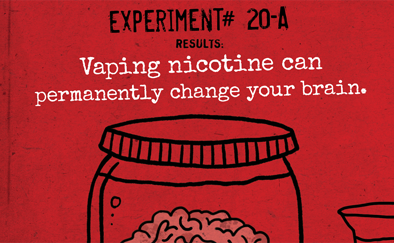The Maryland Department of Health tapped KDHRC to design and implement qualitative research to explore youth and young adults’ knowledge, attitudes, and awareness of vaping to refine their prevention messaging.
Challenge
After decades of declines in youth tobacco use rates, 2018 saw a dramatic uptick in use, driven by e-cigarettes (vapes). Indeed, any tobacco product use among high school students reached 27.1 percent in 2018, the highest rate of any tobacco use among high school students since 2002.1 Rates of vaping in Maryland are even higher — in 2017, 35.5 percent of high school students and 18.4 percent of middle school students in Maryland reported ever using an e-cigarette.2
The Maryland Department of Health, Center for Tobacco Prevention and Control asked KDHRC to design and implement qualitative research to explore youth and young adults’ knowledge, attitudes and awareness of vaping to refine their prevention messaging.
Approach
We conducted eight focus groups in four Maryland cities; in each city we did groups with youth and young adults. The discussion guide explored knowledge and attitudes about vaping, and then used a variety of exercises to explore the vaping messages, advertising styles, and imagery they found most attention grabbing and interesting. The focus groups with youth were complemented with expert interviews with local coalition leaders across Maryland to obtain insight into prevention efforts across the state, barriers coalition leaders face with vaping prevention, and insight into vaping-related issues in MD schools.
Findings
Awareness of vaping was high and young adults strongly stated the need for cessation rather than prevention campaigns. The desired messaging style was dark and scary; the participants desired equally shocking facts for the messaging as well. It was interesting to note that the groups were conducted when vaping was heavily in the news because of sudden youth deaths from vaping (EVALI) and this current event weighed heavily in the conversations.
Products
The Maryland campaign elements developed from these focus groups findings can be found at https://www.smokingstopshere.com/vape/.
References
1 Marshall, L., Schooley, M., Ryan, H., Cox, P., Easton, A., Healton, C., . . . Homsi, G. (2006). Youth tobacco surveillance — United States, 2001–2002. Morbidity and Mortality Weekly Report [MMWR],, 55(SS03), 1-56.
2 Centers For Disease Control and Prevention [CDC]. (2018). Youth Risk Behavior Surveillance System (YRBS





